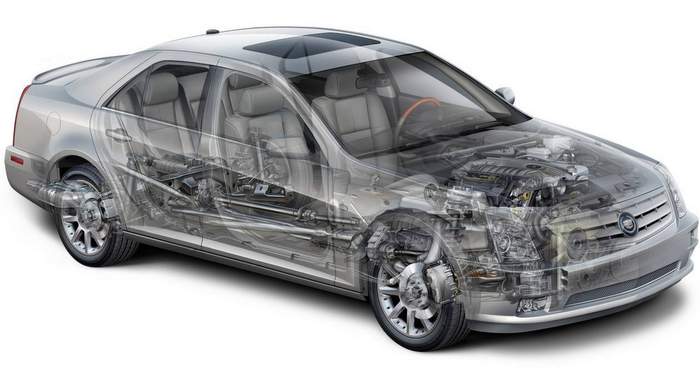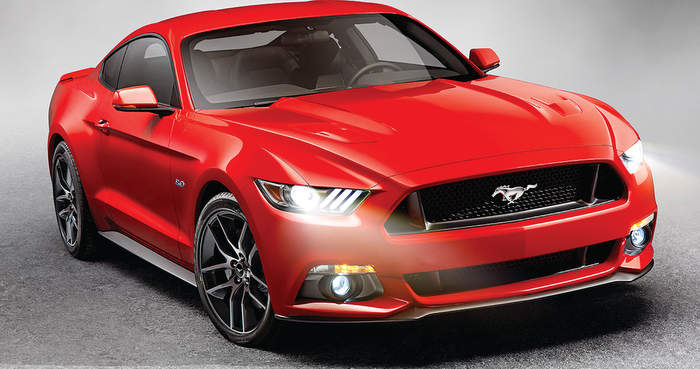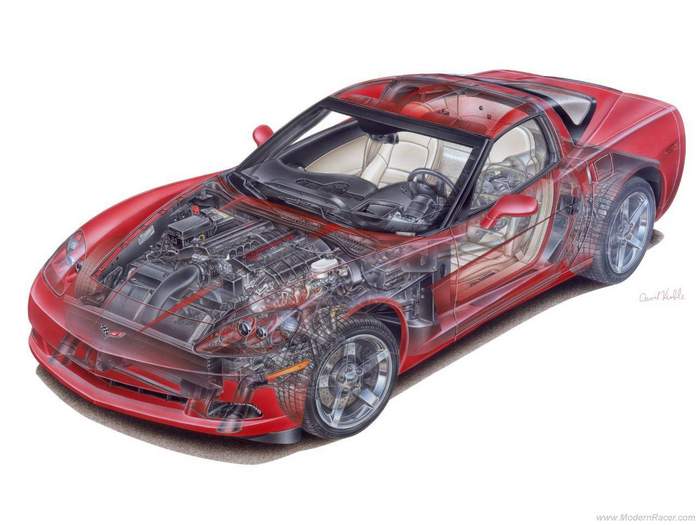Cadillac CTS Alignment Spec
The first-generation Cadillac CTS was introduced in 2003 and ended production in the 2007 model year. The Cadillac CTS was built on GM’s rear-wheel drive Sigma platform. The CTS for years 2003-’07 came with two suspension packages — standard and sport. The packages have two different alignment specifications. The RPO codes for these packages can

Alignment Spec: 2005-2014 Ford Mustang
In 2005, Ford introduced a new Mustang with an all-new platform and clean-sheet design. While the formula of a live axle rear and MacPherson strut front end were the same from the previous model, Ford refined the design. These changes make for a vehicle that is easier to align and diagnose compared to the previous

Corvette C6 Alignment Spec, 2005-’13
The 2005-‘13 Corvette is the sixth generation Corvette, often called the C6. There is nothing exotic about performing an alignment on a C6. In fact, you may find the C6 is easier to align than many cars and SUVs. Initial Inspection When going for a test-drive or pulling it into the shop, look at the

Alignment Specs For 2010 Camaro
The 2010 Camaro was GM’s re-entry into the pony-car wars with Ford and Chrysler. Like the Dodge Challenger, the Camaro borrows its platform from an existing rear-wheel-drive platform. The Camaro is based on the Zeta platform that includes the Chevrolet Police Patrol Vehicle and Pontiac G8. The front suspension uses strut and dual lower control arms. Always check the front lower control arm’s inboard bushing for damage in the form of rubber separating from the metal components. When this bushing goes bad, it will change the SIA and caster.
Alignment Specs: 2010-2012 Kia Soul
The Kia Soul is one of the best selling cars of the past three years. While the usual Kia/Hyundai bits are under the Soul’s trendy exterior, it does have four different strut and spring options that can make ordering the right parts a nightmare. This is the typical “net build” vehicle with no adjustments for camber or caster. The factory manual recommends replacing parts if something is out of alignment, but the aftermarket offers several solutions to bring a Soul into spec.
Alignment Spec: 2006-2011 Hyundai Accent
Hyundai began selling the 3-door Accent hatchback in the United States during the spring of 2006. The Accent is a “net-build” vehicle with no built-in adjustments, but adjustments can be made with aftermarket parts.
Alignment Specs: 2002-2006 Mini Cooper
There are no built-in factory adjustments for front camber or caster. The only way to adjust these angles is to purchase adjustable upper strut mounts.
Alignment Spec: GM W-Platform Alignment
The 2004-2013 GM W-Platform represents the evolution of the GM mid/full-sized front-wheel-drive car. The W-Platform includes best sellers like the 2004-2013 Chevy Impala, 2006-2007 Chevy Monte Carlo, 2004-2008 Pontiac Grand Prix and 2005-2009 Buick LaCrosse. This is a “bread and butter” vehicle for every shop. This generation of vehicles is solid and easy to work on. Gone are the quirks of previous generations.
Alignment Specs: BMW 3-Series 1998-2006 E46
The BMW E46 was the best selling generation of the 3-Series. The rear-wheel drive sports sedan is one of the more complicated cars to align, but it has many service and repair opportunities.
Alignment Specs: 1999-2006 Honda Insight Hybrid
You may not see many Honda Insights in your alignment bay, but don’t let the strange styling and hybrid badge scare you away from doing any chassis repairs.
